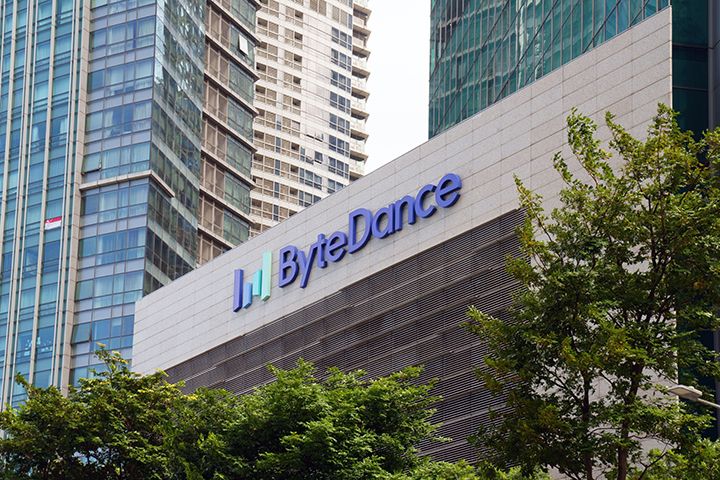If you’ve ever wondered whether ByteDance and TikTok are the same thing, you’re not alone. ByteDance is the Chinese parent company that owns TikTok, but they’re distinctly different entities serving different purposes. Think of it like this: if TikTok is the popular restaurant everyone loves, ByteDance is the entire restaurant group that owns multiple establishments worldwide.
The confusion is understandable since TikTok dominates headlines, but ByteDance operates a massive portfolio of over 110 apps across multiple countries. While TikTok captures our attention with viral dances and memes, ByteDance quietly builds the technology empire that powers not just TikTok, but platforms serving over 2.5 billion people globally.
Here’s what makes this relationship fascinating: ByteDance generated $155 billion in revenue in 2024, making it the world’s largest social media company by revenue. Yet most people only know them through TikTok. This article breaks down exactly what separates these two entities and why it matters for creators, businesses, and everyday users.
What is ByteDance?
ByteDance is a Chinese internet technology company founded in 2012 by Zhang Yiming, headquartered in Beijing. The company started as an AI-driven content platform developer and has grown into a global technology powerhouse employing approximately 110,000 to 150,000 people across more than 30 countries.
The company operates like a digital content factory, using advanced AI algorithms to create, distribute, and monetize content across multiple platforms. ByteDance’s core strength lies in its recommendation algorithms that analyze user behavior to deliver personalized content experiences.
Beyond TikTok, ByteDance owns Toutiao (a news aggregation platform), Douyin (TikTok’s Chinese counterpart), CapCut (video editing software), and over 15 AI applications. The company has expanded into enterprise software with Lark, e-commerce through TikTok Shop, and even education technology.
ByteDance’s valuation reached over $330 billion in 2025, making it one of the world’s most valuable private companies. The company generates revenue through advertising, live broadcasting, e-commerce, and enterprise services, with international markets contributing $39 billion in 2024.
What is TikTok?
TikTok is a short-form video sharing app owned by ByteDance, serving approximately 1.59 billion monthly active users worldwide. Launched internationally in 2018 after ByteDance acquired Musical.ly, TikTok became the global version of Douyin, which had already gained massive popularity in China.
The platform allows users to create, edit, and share 15-second to 10-minute videos with music, filters, and effects. TikTok’s “For You” page uses ByteDance’s proprietary algorithm to deliver personalized content, making it highly addictive and engaging.
In the United States, TikTok boasts 117.9 million monthly active users, representing 32.9% of the US population. The platform has become a cultural phenomenon, influencing everything from music trends to marketing strategies.
TikTok generates revenue primarily through advertising, with TikTok Shop contributing $33.2 billion in global sales in 2024. The platform has evolved from entertainment to include educational content, business marketing, and social commerce.
Key Differences Between ByteDance and TikTok
| Aspect | ByteDance | TikTok |
|---|---|---|
| Type | Parent technology company | Social media application |
| Revenue | $155 billion (2024) | Part of ByteDance’s revenue |
| User Base | 2.5+ billion across all platforms | 1.59 billion monthly users |
| Products | 110+ apps and services | Single video-sharing app |
| Geography | Global operations, China-based | Global except China (uses Douyin) |
| Business Model | Diversified: ads, enterprise, AI | Primarily advertising and commerce |
| Employees | 110,000-150,000 globally | Subset of ByteDance workforce |
The most important distinction: ByteDance is the technology infrastructure company, while TikTok is just one of its consumer-facing products. ByteDance develops the algorithms, handles data processing, and creates the underlying technology that powers TikTok’s addictive experience.
Image Suggestion: Insert a visual diagram showing ByteDance as the umbrella company with TikTok, Douyin, CapCut, and other apps as subsidiaries.
Why ByteDance Matters for Content Creators
ByteDance’s AI technology powers the recommendation systems that determine which videos go viral. The company has invested over $20 billion in AI infrastructure in 2025, making it the biggest buyer of Nvidia’s AI chips designed for content recommendation.
Understanding ByteDance helps creators grasp why TikTok’s algorithm is so effective at content distribution. The parent company’s expertise in AI and machine learning creates opportunities for creators to reach massive audiences through precise targeting.
ByteDance also owns CapCut, the video editing tool used by 200 million creators monthly. This integration means creators using ByteDance’s editing tools have optimized compatibility with TikTok’s platform.
For businesses, ByteDance’s expansion into AI applications and enterprise software creates new marketing opportunities. The company’s Doubao AI chatbot has 75 million monthly users, while text-to-video generators like Jimeng offer content creation possibilities.
Current Regulatory Challenges
ByteDance faces significant regulatory pressure, particularly regarding TikTok’s operations in the United States. The company must navigate complex divestiture requirements while maintaining operational control.
Recent developments suggest ByteDance will maintain approximately 50% of TikTok US profits even after potential ownership changes. The company would receive licensing fees for its algorithm plus profit sharing from its remaining equity stake.
ByteDance has postponed IPO plans indefinitely following guidance from Chinese regulators in 2021. This creates uncertainty for investors but hasn’t impacted the company’s growth trajectory.
The regulatory environment highlights why businesses need reliable, accessible alternatives for video content creation. Unlike ByteDance’s complex corporate structure, independent platforms offer clearer operational certainty.
How ByteDance Compares to vidBoard for Business Users
| Feature | ByteDance/TikTok | vidBoard |
|---|---|---|
| Accessibility | Complex regulatory environment | Available immediately worldwide |
| Cost Structure | Free for users, expensive for business features | Affordable plans starting at basic tiers |
| Content Control | Algorithm-dependent visibility | Direct control over video distribution |
| Professional Focus | Entertainment-first platform | Business and education focused |
| Integration | Limited business tool integration | CRM and marketing platform compatible |
| Support | Community-based support | Dedicated business support |
While ByteDance excels at viral content distribution, vidBoard focuses on practical business applications. Professional users need reliable, cost-effective video creation tools without regulatory uncertainty.
vidBoard offers immediate access to AI-powered video creation with realistic avatars, multi-language support, and script generation. Unlike TikTok’s entertainment focus, vidBoard serves entrepreneurs, educators, and small businesses with professional video needs.
Pro Tip: vidBoard will also integrate ByteDance technology in the future, available under a separate plan, combining the best of both platforms.
Use Cases: When to Choose Each Platform
ByteDance/TikTok Works Best For:
vidBoard Excels For:
Professional presentations and training videos
Personalized customer outreach and sales videos
Educational content creation for courses and tutorials
Small businesses needing cost-effective video marketing
The key difference: ByteDance platforms require viral success for visibility, while vidBoard provides controlled, targeted video distribution. Professional users often need guaranteed reach rather than algorithm-dependent exposure.
Image Suggestion: Screenshots comparing TikTok’s entertainment-focused interface with vidBoard’s business-oriented dashboard.
Step-by-Step: Creating Content on Each Platform
Using TikTok (ByteDance Platform):
Using vidBoard (Simplified Process):
Sign up for vidBoard account (free trial available)
Choose from realistic avatar templates or upload custom script
Select language and voice preferences from multi-language options
Generate video automatically using AI technology
Download and distribute across any platform or channel
Track engagement through integrated analytics
The vidBoard process eliminates algorithm dependency and trending content requirements, making professional video creation more predictable and controllable.
Future Integration and Technology Trends
ByteDance continues investing heavily in AI infrastructure, with plans to spend $20 billion in 2025 on artificial intelligence capabilities. The company leads development in text-to-video generation, AI chatbots, and recommendation systems.
TikTok Shop’s $33.2 billion in global sales demonstrates ByteDance’s expansion into e-commerce. The platform increasingly serves as a shopping destination rather than pure entertainment.
Regulatory developments will shape ByteDance’s future operations, particularly in Western markets. The company must balance compliance requirements with technological innovation.
For business users, these developments highlight the importance of platform diversification. Relying solely on algorithm-driven platforms creates risk when regulatory changes occur.
vidBoard’s approach of providing direct video creation tools offers stability regardless of platform-specific changes. Professional users benefit from tools that work consistently across all distribution channels.
FAQs
What is the main difference between ByteDance and TikTok?
ByteDance is the Chinese parent company that owns TikTok along with over 110 other apps and services. TikTok is just one social media application in ByteDance’s portfolio, serving 1.59 billion users globally. ByteDance operates as a technology company generating $155 billion in revenue, while TikTok is a consumer-facing video platform.
Does ByteDance control TikTok’s algorithm?
Yes, ByteDance develops and controls the AI algorithms that power TikTok’s content recommendation system. The parent company invests over $20 billion annually in AI infrastructure and employs thousands of engineers who create the machine learning systems that determine which videos users see. This algorithm technology is considered ByteDance’s most valuable asset.
Why is ByteDance facing regulatory challenges?
ByteDance faces scrutiny due to concerns about data privacy and potential Chinese government influence over its platforms. US lawmakers worry that ByteDance could share American user data with Chinese authorities or manipulate content for political purposes. These concerns led to legislation requiring ByteDance to divest its US operations or face bans.
Can businesses use ByteDance platforms for professional marketing?
While TikTok offers business advertising options, the platform primarily focuses on entertainment content that may not suit all professional needs. ByteDance platforms work best for viral marketing campaigns targeting younger demographics, but require significant budget and trending content creation. Professional users often need more predictable, controlled video creation tools for business communications.
What alternatives exist to ByteDance platforms for video creation?
Professional alternatives like vidBoard offer AI-powered video creation without algorithm dependency. These platforms provide realistic avatars, multi-language support, and direct distribution control, making them ideal for business presentations, training videos, and personalized customer outreach. Unlike ByteDance platforms, professional tools guarantee content visibility regardless of trending topics.
Ready to Create Professional Videos Today?
ByteDance and TikTok represent powerful but complex platforms that require viral success for maximum impact. While they excel at entertainment and trend-driven content, professional users often need more predictable, controllable video creation solutions.
vidBoard provides immediate access to AI-powered video creation without regulatory uncertainty or algorithm dependency. Professional users can create personalized videos, training content, and business presentations using realistic avatars and multi-language support.
Unlike ByteDance’s entertainment-focused approach, vidBoard serves entrepreneurs, educators, and small businesses with practical, affordable video tools. Start creating professional videos today with vidBoard’s free trial and experience the difference between viral-dependent platforms and reliable business tools.
























